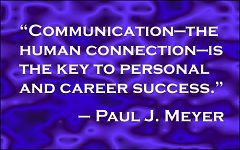Pick a Little, Talk a Little: The Simple Secrets to Teleconferencing Success
Proper communication is essential for any video or teleconference. In order to get the information needed, all parties involved need to not only know how to communicate, but also how to receive and interpret the communications of others.
Although Casamo and Associates can capture everything said and seen through videoconferencing, interpretation and clarity of speech is entirely up to you and the other participants. It’s important to recognize that a teleconference isn’t the same as casual, face-to-face conversation; the participants have to concentrate on clear communication and active listening.
Opening Up Communication to Avoid a Closed Conference
 Videoconferencing makes communication easier as participants can see each others’ facial expressions and body language, which can provide clues to interpretation. Teleconferencing can also bring out verbal cues such as intonation, nervous stuttering, emphasis, and a host of other details that clarify and refine the message.
Videoconferencing makes communication easier as participants can see each others’ facial expressions and body language, which can provide clues to interpretation. Teleconferencing can also bring out verbal cues such as intonation, nervous stuttering, emphasis, and a host of other details that clarify and refine the message.
However, in order for all parties involved to benefit, communication needs to be clear, precise, and free from jumbled backtalk or confusion. Make sure your next conference is communication-perfect by following these simple speech guidelines:
- Simplify. Try not to use complex words or phrases. Instead of spouting out technical terms, put them in layman’s terms to ensure everyone on the call understands. Otherwise, you may come off as pompous or conceited—while also confusing your audience.
- Enunciate. Background noises and poor connections can make words sound garbled by no fault of your own. However, this is why enunciation is extremely important, especially with positive or negative contractions. For example, instead of jumbling your phrase together in order to get it out quickly, take the time to separate your words for a clearer understanding. Instead of mumbling “Ihaven’tbeentherebefore,” slow down and enunciate each word to “I have not been there before.” At the same time, be careful not to put too much of a pause in between words as you may come off as patronizing.
- Clarify. If you believe any of your statements may sound confusing or could be misinterpreted, take the time to clarify it right then and there; don’t wait for someone to ask. In addition to making it easier for the other participants to get a good grasp of what you’re saying, clarification will eliminate time consuming questions at the end of the meeting.
- Encourage involvement. After you’re through speaking, ask questions and encourage responses from others. This will not only keep the conversation going, but it will allow you to make sure your point was made and that everyone understood what you said.
For more information on video and teleconferencing success, feel free to browse our site for additional articles, guidelines, and support. Remember, it’s up to you to make your next meeting a success. Let us help you achieve your goals.

